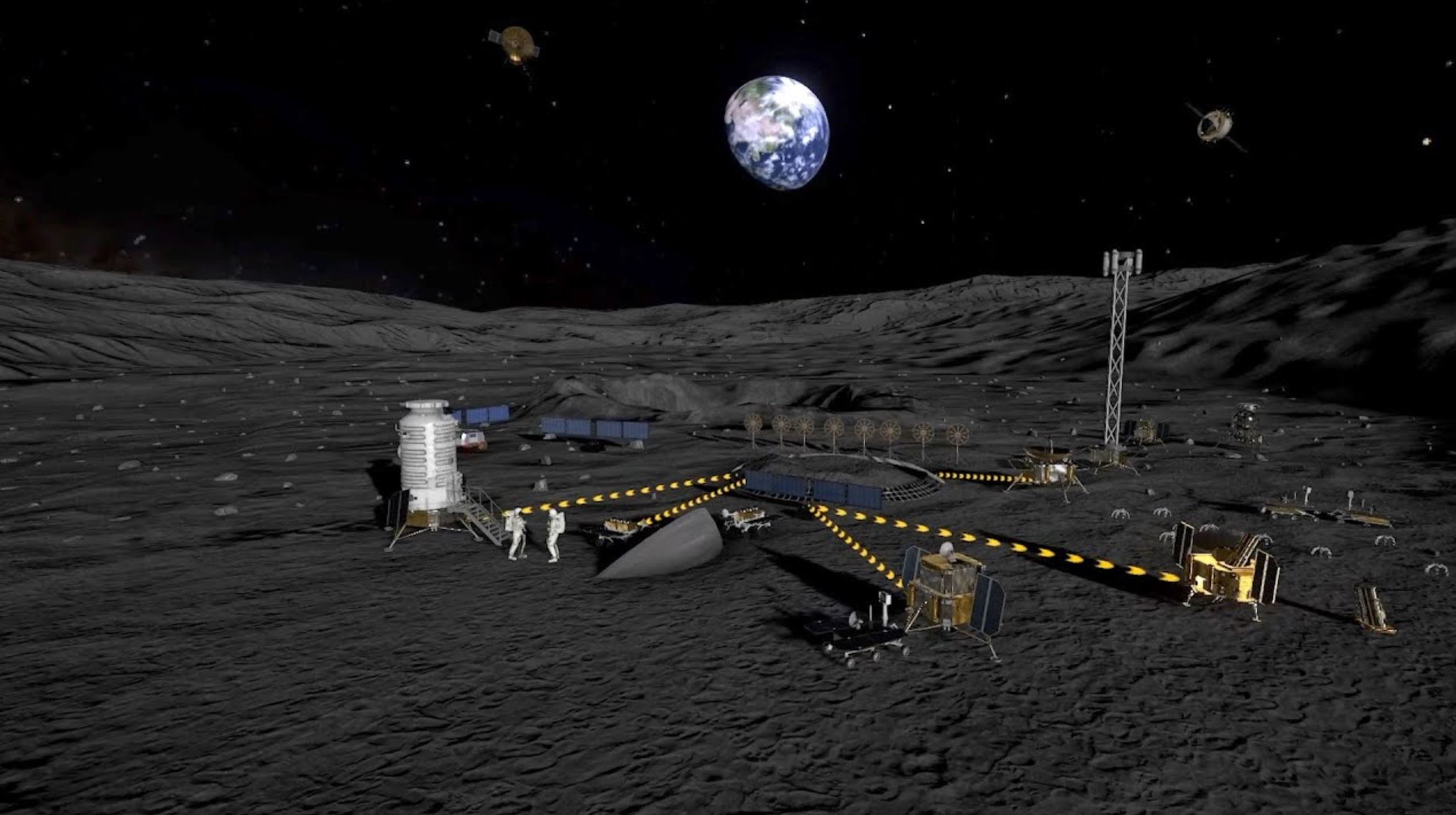
HELSINKI — China continues to add new members to its International Lunar Research Station initiative, but many of these are subnational, suggesting issues attracting partners.
The latest development saw the Asociación de Astronomía de Colombia (ASASAC) sign a memorandum of understanding on cooperation on the आईएलआरएस with China’s Deep Space Exploration Laboratory (DSEL) earlier this month. DSEL की घोषणा the agreement March 27.
Kyrgyzstan’s Arabaev Kyrgyz State University पर हस्ताक्षर किए an MoU in early March. PT Universal Satelit Indonesia (UniSat) साइनअप किया in December. These are the latest in a line of subnational or non-governmental entities—such as firms, universities and astronomical associations—that have signed MoUs with DSEL. Others include the University of Sharjah of the United Arab Emirates (UAE) and Hawaii’s International Lunar Observatory Association (ILOA).
“China seems to face more difficulties than expected in bringing partners on board its ILRS program. Including civilian associations and universities likely reflects a lack of better alternatives,” Marc Julienne, head of China research at the French Institute of International Relations (IFRI), told SpaceNews.
Julienne further notes that China signed a cooperation agreement on ILRS with only one country: मिस्र. It has signed Memorandums of Understanding with only two states, दक्षिण अफ्रीका और पाकिस्तान, while it signed lower-level “joint statements on cooperation” with वेनेजुएला, बेलोरूस और आज़रबाइजान.
Geopolitical complexities
The ILRS is a China-led, initially Sino-Russian initiative parallel to and separate from NASA’s Artemis program. Both aim to establish a sustainable lunar presence and are engaged in attracting partners.
The Russian invasion of Ukraine in February 2022 has impacted ILRS efforts. China has regularly omitted any mention of Russia as an ILRS partner since this time, though still Russia remains involved. Russia’s space sector has also suffered following the start of its invasion, while its Luna 25 moon lander mission, nominally part of ILRS, विफलता में समाप्त हुआ.
Last month Uruguay became the नौवां देश to sign the Artemis Accords which outline best practices in lunar and deep space exploration. China has said it intends to establish an organization, named आईएलआरएससीओ, to coordinate the ILRS initiative. It will be headquartered in the city of Hefei in Anhui province.
Julienne notes that China’s space cooperation is now looking to the “Global South.” This is because of a lack of better alternatives and broader diplomatic reasons.
“The main challenge for China in engaging “Global South” countries in ILRS, is that countries either have a space program and collaborate with the United States, Europe or Japan, and many of them have already signed the Artemis Accords with the U.S., like Brazil, Ecuador, Colombia, Nigeria, Saudi Arabia, the UAE, and Uruguay, or they have no or embryonic space program, like Venezuela, Azerbaijan, Belarus, and Pakistan.”
In the first case, China has little chance of winning these countries over the U.S., says Julienne. In the second case, for countries with little or no experience in the field, space is often not a priority and therefore they don’t constitute strong partners for China.
Subnational partners could however provide a route to wider influence and cooperation, even with the UAE, which is an Artemis signatory and involved in the Gateway.
| LRS Signatory | प्रकार |
|---|---|
| चीन | देश |
| बेलोरूस | देश |
| पाकिस्तान | देश |
| आज़रबाइजान | देश |
| रूस | देश |
| वेनेजुएला | देश |
| दक्षिण अफ्रीका | देश |
| मिस्र | देश |
| एशिया-प्रशांत अंतरिक्ष सहयोग संगठन (एपीएससीओ) | अंतर-सरकारी संगठन |
| नैनोस्पेस एजी (स्विट्जरलैंड) | फर्म |
| अंतर्राष्ट्रीय चंद्र वेधशाला संघ (आईएलओए, हवाई) | संगठन" |
| थाईलैंड का राष्ट्रीय खगोलीय अनुसंधान संस्थान (एनएआरआईटी) | संस्थान |
| University of Sharjah (UAE) | विश्वविद्यालय |
| Adriatic Aerospace Association (A3) (Croatia) | संगठन" |
| Asociación de Astronomía de Colombia (ASASAC) | संगठन" |
| Arabaev Kyrgyz State University (Kyrgyzstan) | विश्वविद्यालय |
| PT Universal Satelit Indonesia (UniSat) | फर्म |
Lunar infrastructure
Diplomacy is just one facet of the new lunar programs. Both the Artemis and ILRS projects require vast economic and technological resources. NASA has demonstrated its super heavy-lift SLS rocket. SpaceX is currently working towards making Starship operational.
China is developing the लंबे मार्च 10 rocket for human spaceflight beyond low Earth orbit. It plans to send its first astronauts to the lunar surface 2030 पहले using two Long March 10 launches. Crew will launch on one rocket, with an in-development चंद्र लैंडर stack to launch separately on another.
बडा वाला लंबे मार्च 9 rocket—which appears to have undergone a number of design changes, notably for reusability—is expected to become operational in the 2030s. That launcher would facilitate large lunar infrastructure missions. These were outlined in a China-Russia ILRS roadmap unveiled in 2021.
पिछले हफ्ते चीन launched its Queqiao-2 lunar communications relay satellite. It घुसा an initial 200 x 100,000-kilometer orbit 112 hours later. This will be trimmed into a 24-hour-period, highly-elliptical “frozen” orbit. Two smaller satellites were aboard the launch, named Tiandu-1 and Tiandu-2. These are pathfinders for a planned wider क्यूकियाओ तारामंडल to provide lunar navigation and communication services.
Queqiao-2 will facilitate the Chang'e-6 lunar far side sample return mission, launching in May. It will later support the future Chang'e-7 और Chang'e-8 lunar south pole landings. The missions are precursors intended to establish a “basic model” of the ILRS. They will also test key technologies including in-situ resource utilization. The relay satellite could also play a role in international cooperation.
- एसईओ संचालित सामग्री और पीआर वितरण। आज ही प्रवर्धित हो जाओ।
- प्लेटोडेटा.नेटवर्क वर्टिकल जेनरेटिव एआई। स्वयं को शक्तिवान बनाएं। यहां पहुंचें।
- प्लेटोआईस्ट्रीम। Web3 इंटेलिजेंस। ज्ञान प्रवर्धित। यहां पहुंचें।
- प्लेटोईएसजी. कार्बन, क्लीनटेक, ऊर्जा, पर्यावरण, सौर, कचरा प्रबंधन। यहां पहुंचें।
- प्लेटोहेल्थ। बायोटेक और क्लिनिकल परीक्षण इंटेलिजेंस। यहां पहुंचें।
- स्रोत: https://spacenews.com/china-adds-new-moon-base-project-partners-but-struggles-to-attract-national-level-participation/



